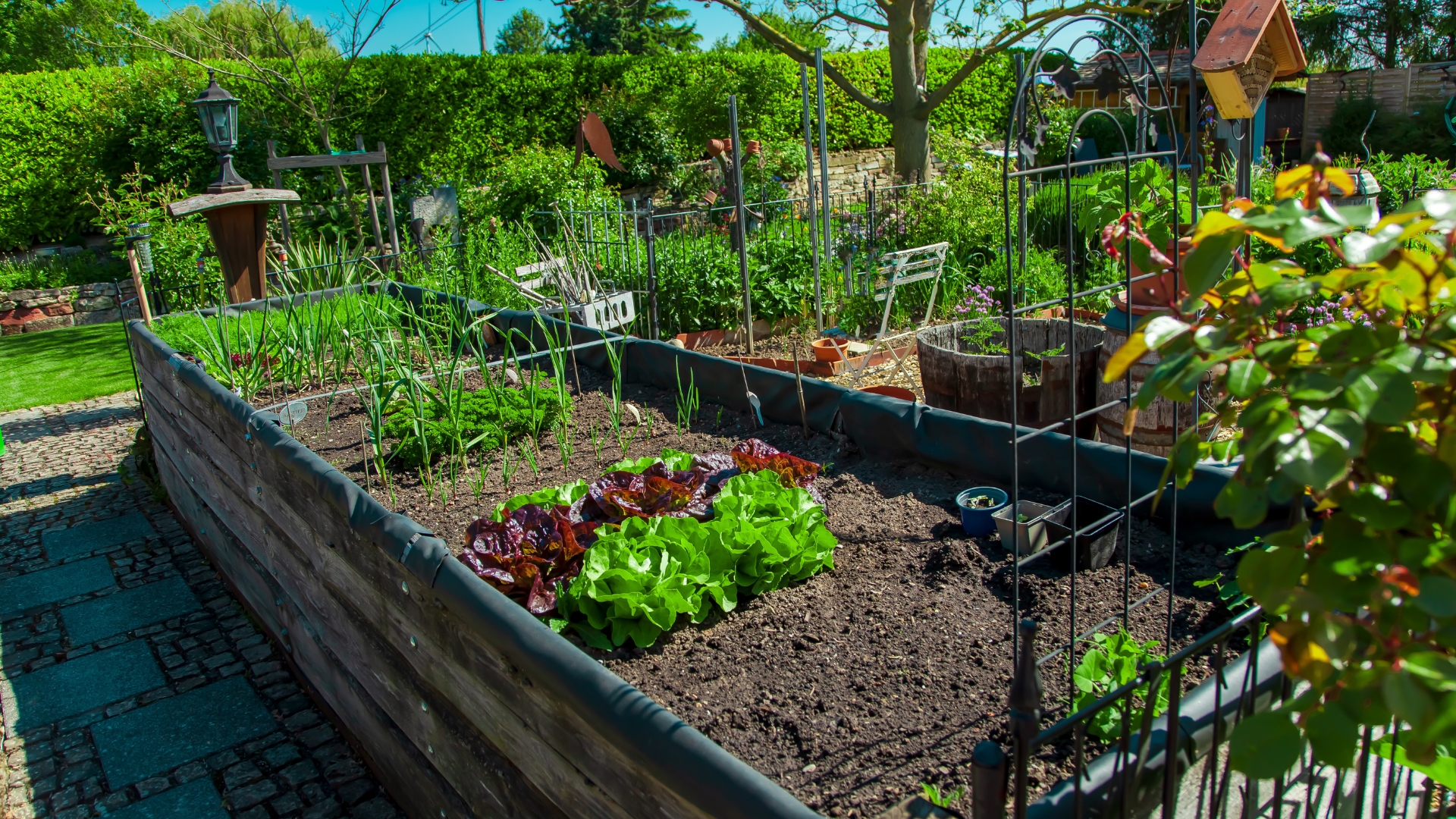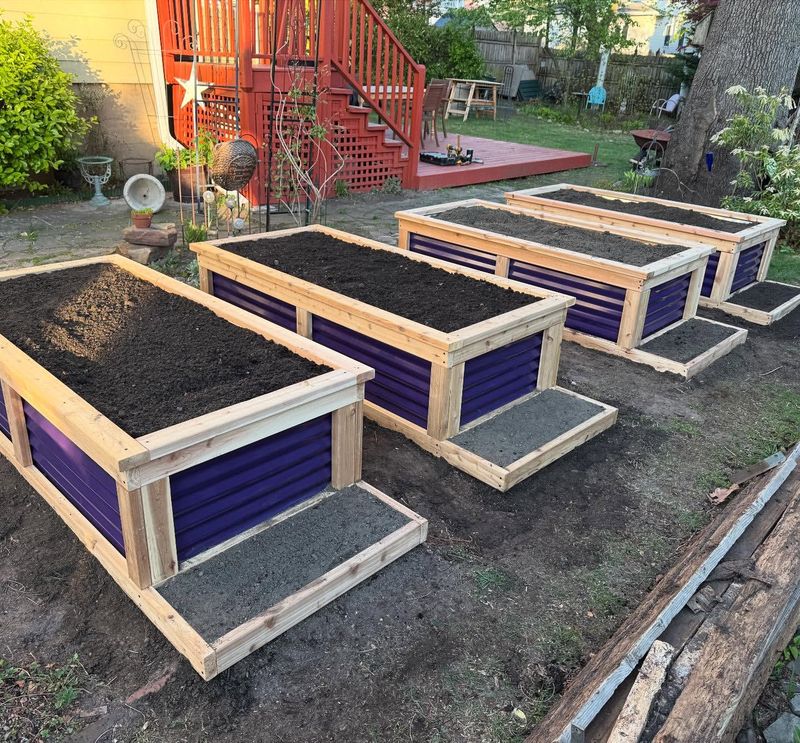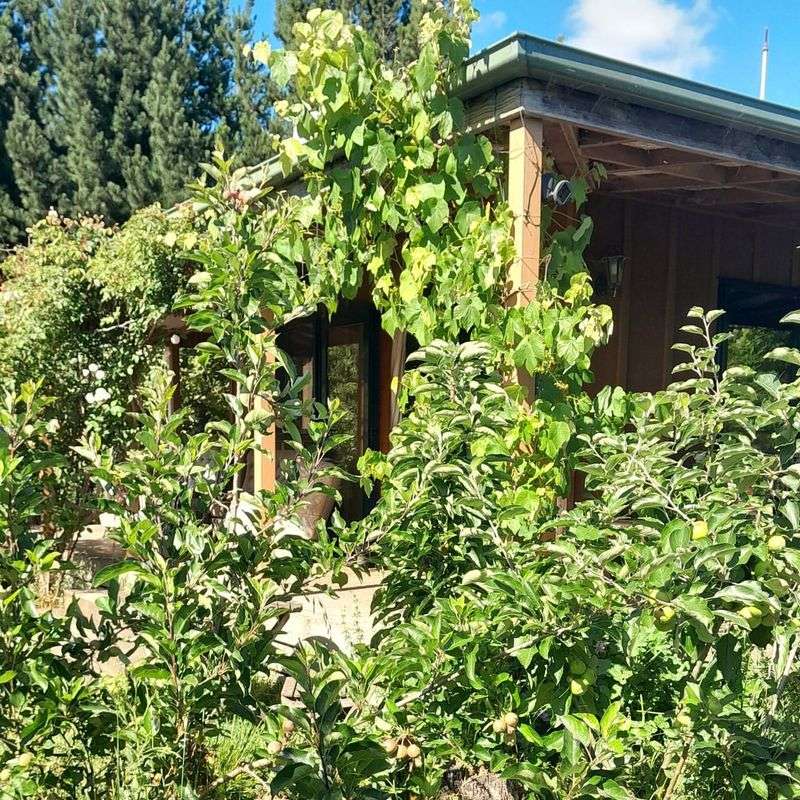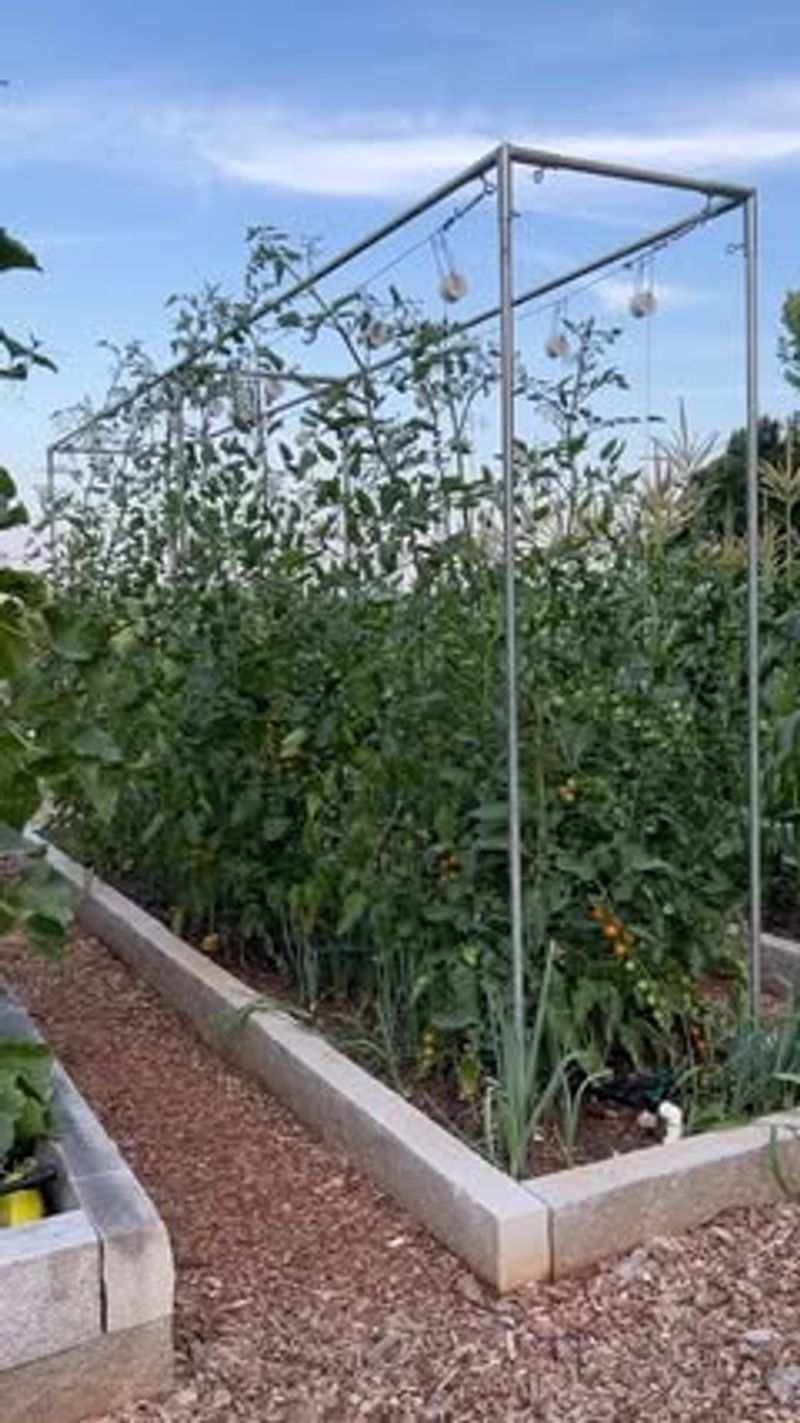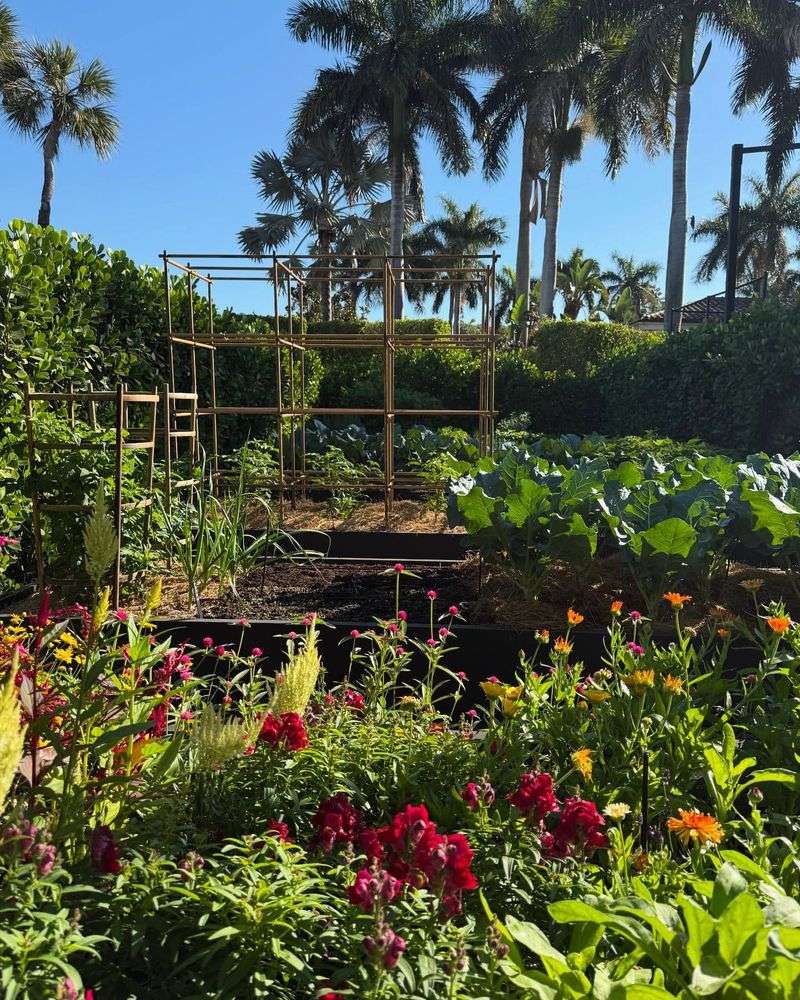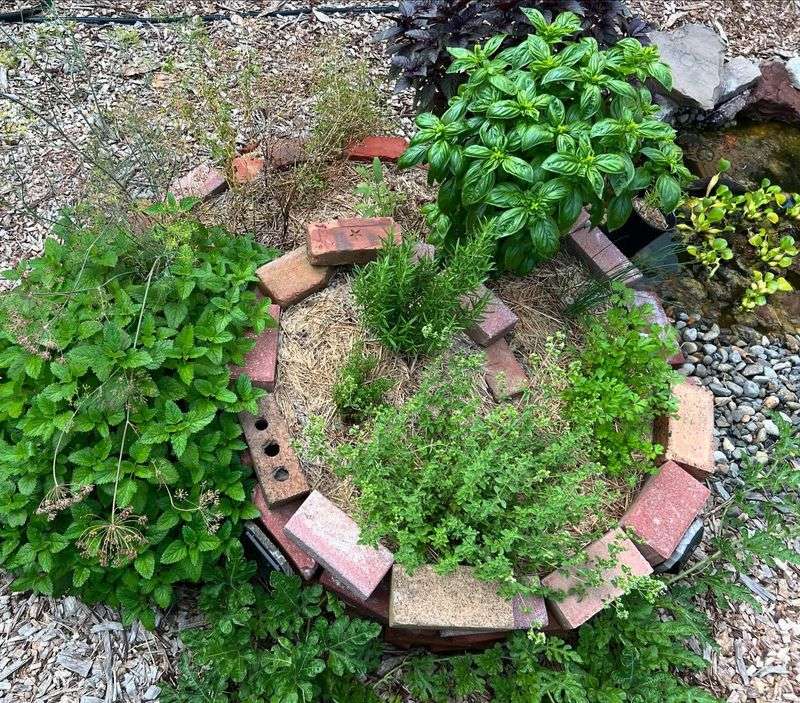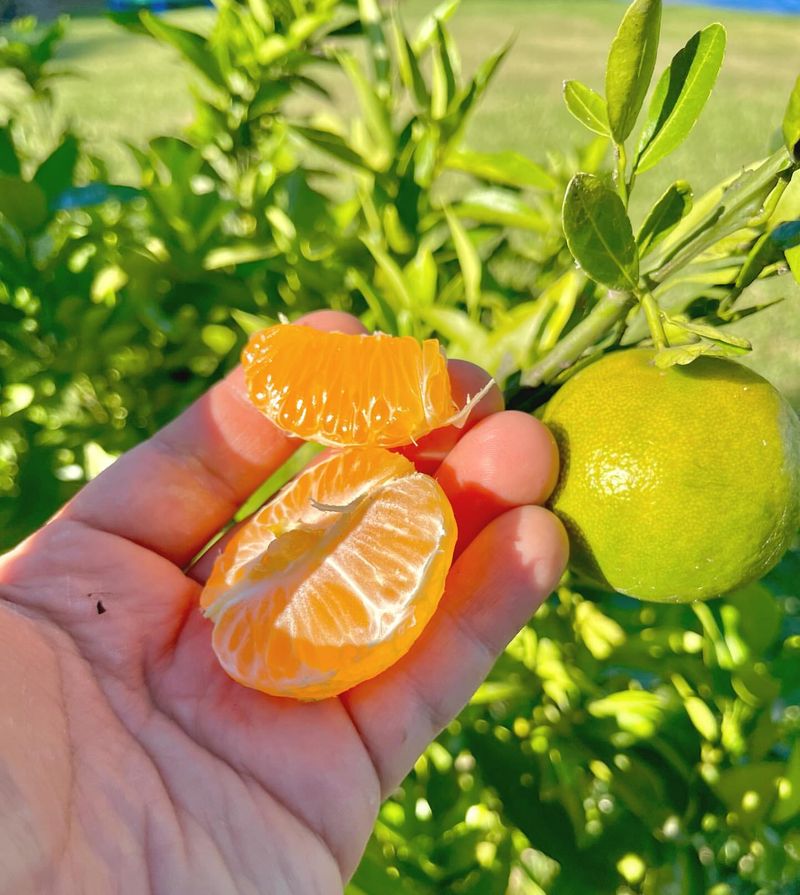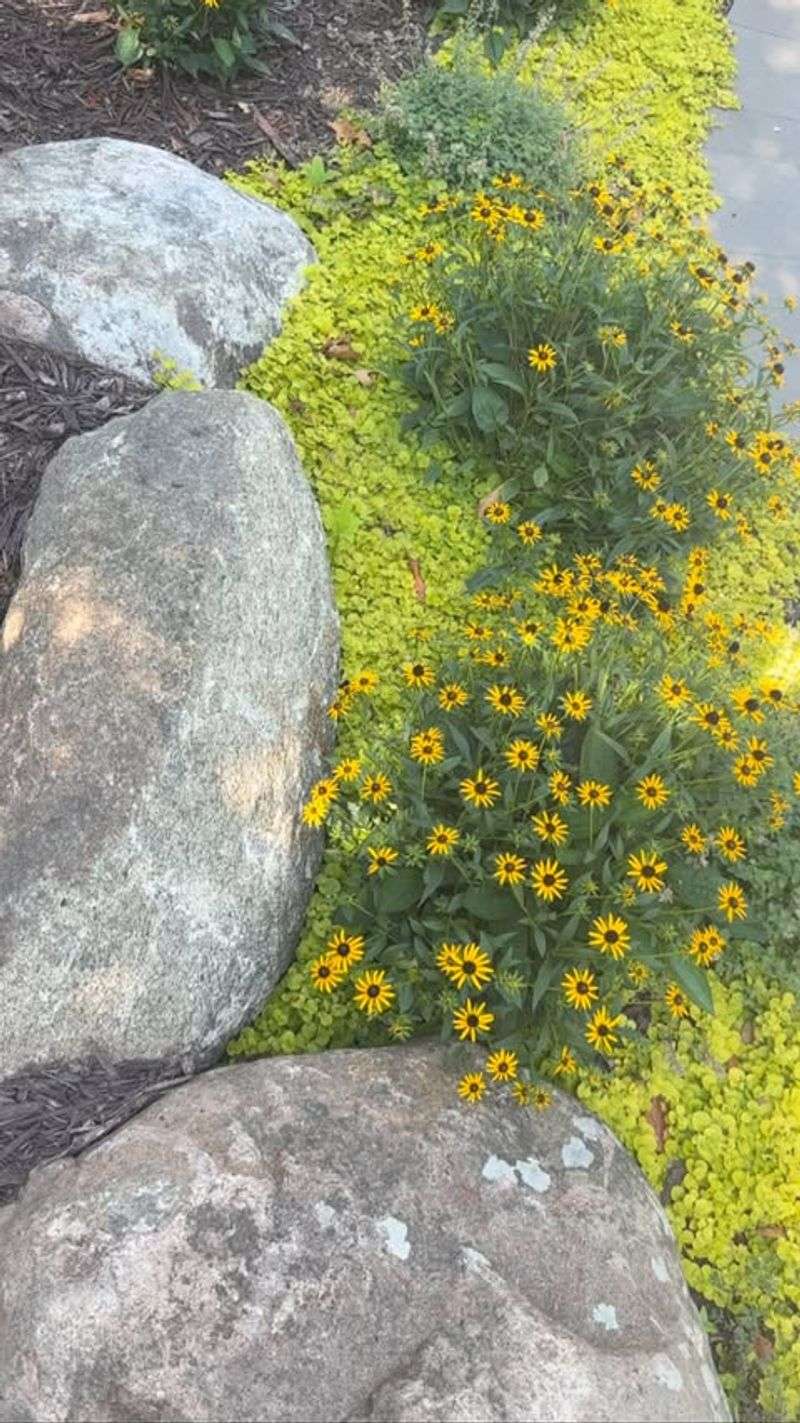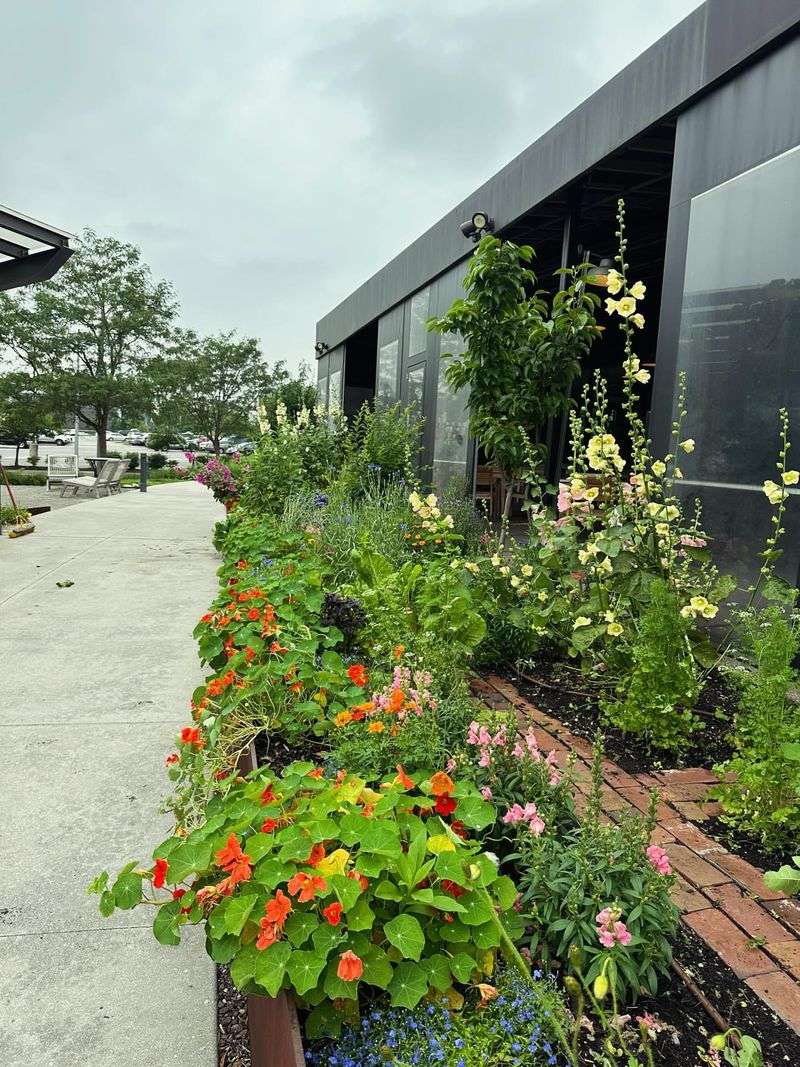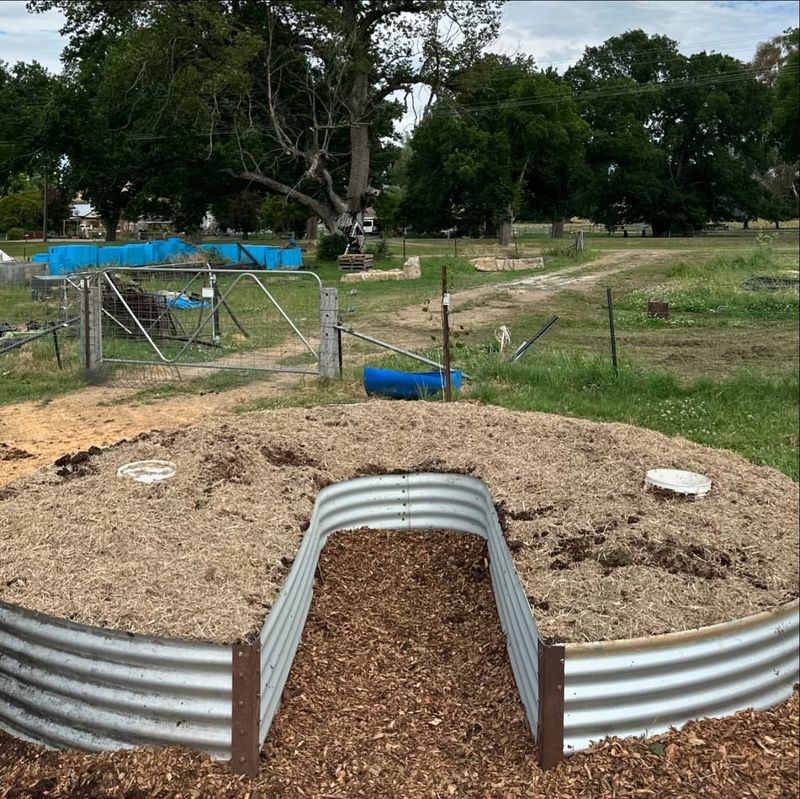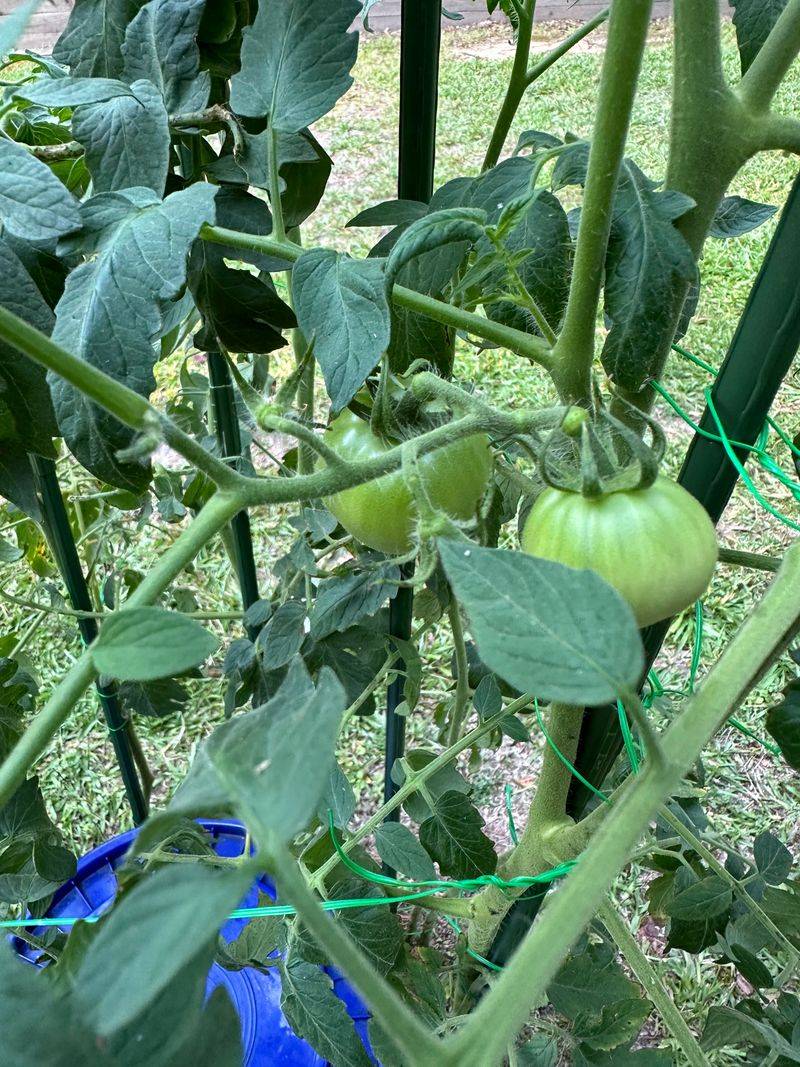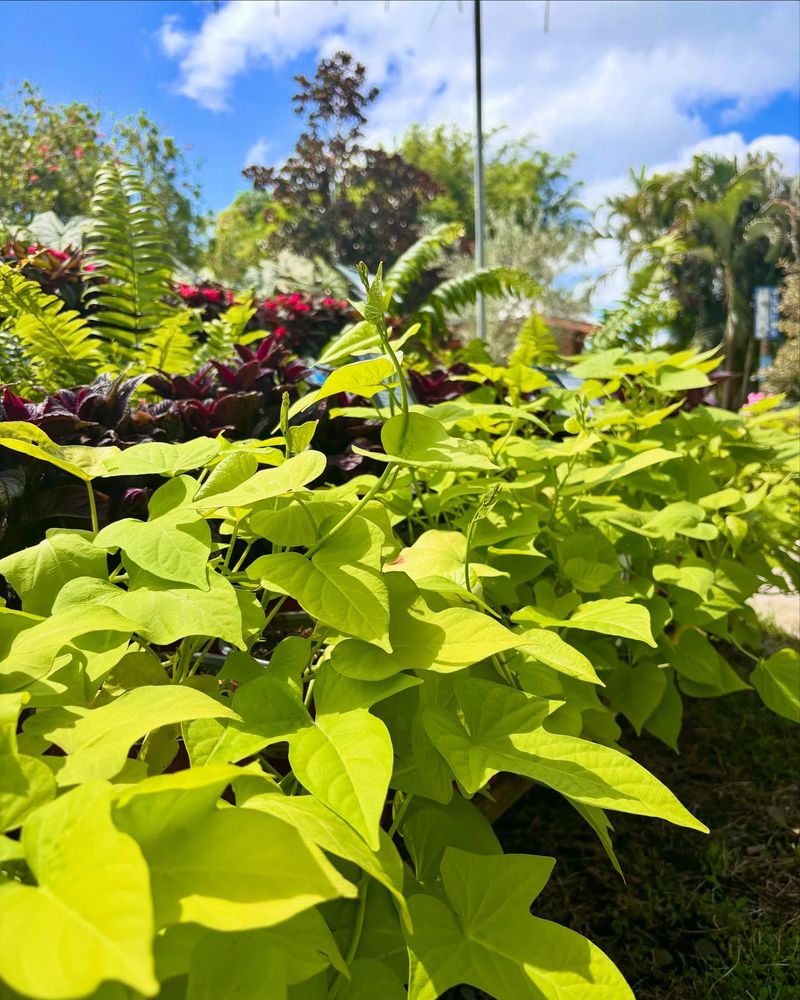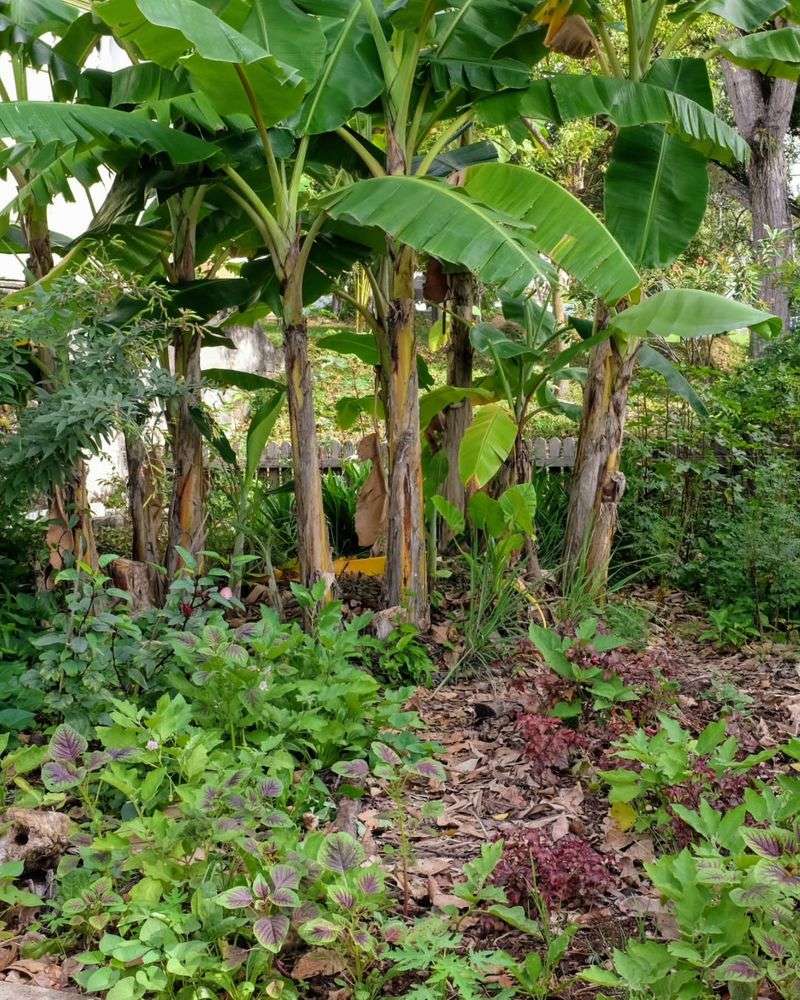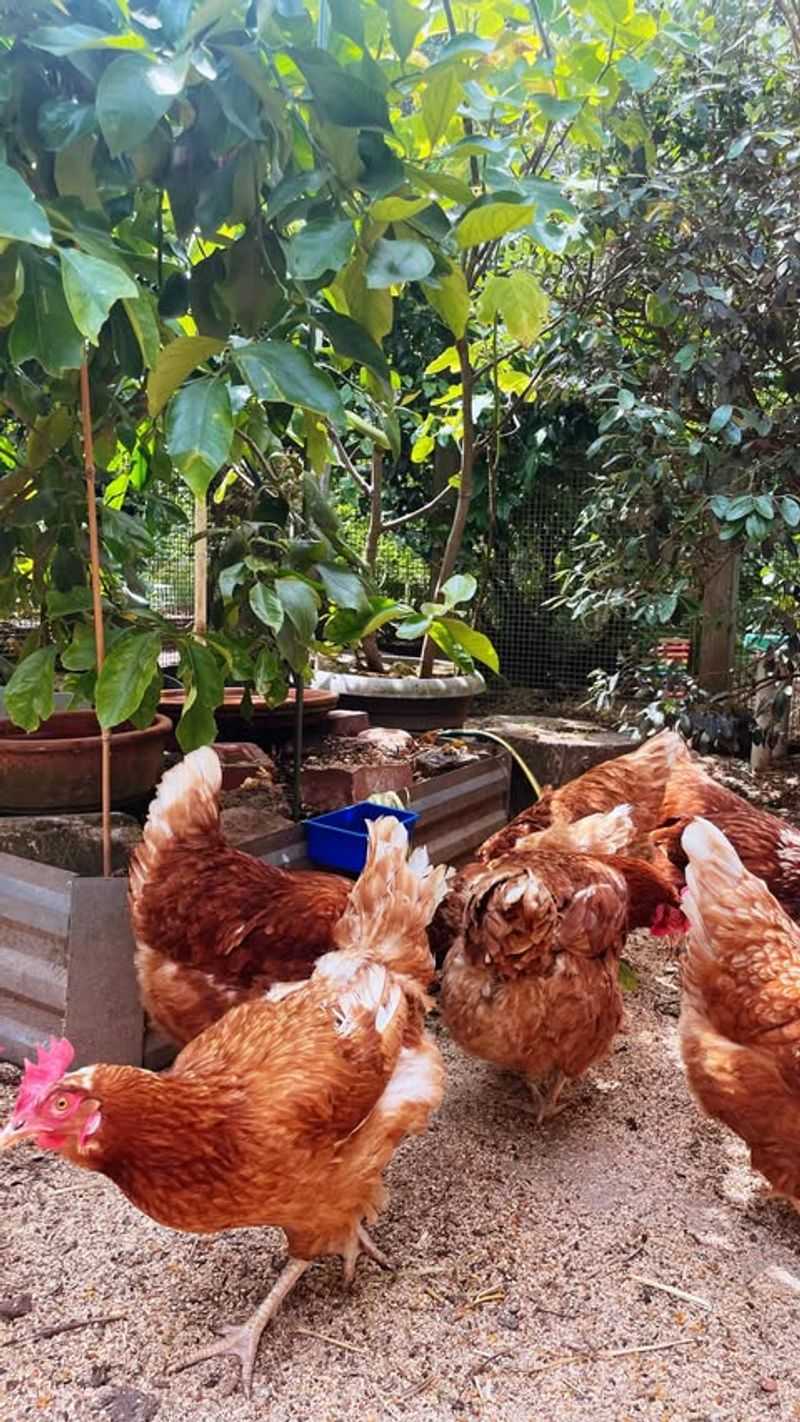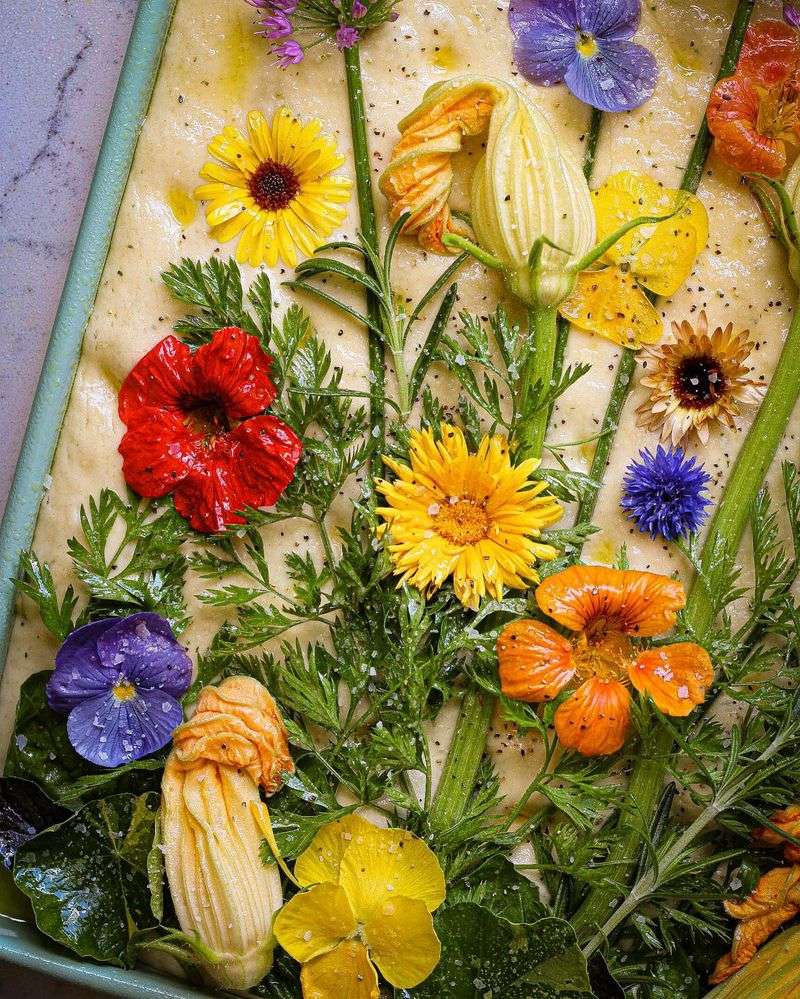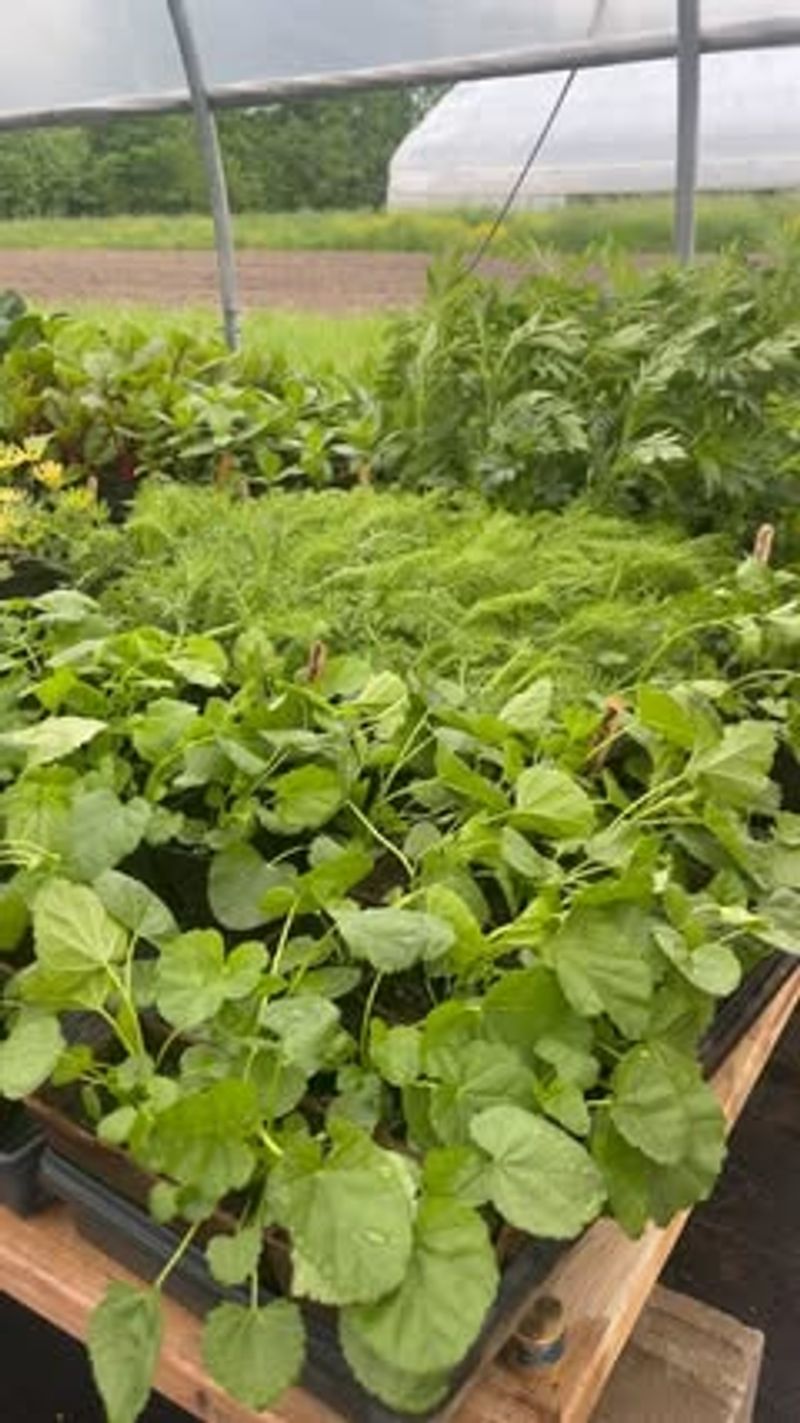Louisiana gardeners aren’t hiding their veggies in the backyard anymore—they’re putting them right out front. Imagine walking past rows of peppers, tomatoes, and herbs instead of plain old grass!
It’s bold, it’s beautiful, and it totally makes sense. These front yard food gardens are bursting with color, flavor, and personality.
I love how practical and pretty this trend is—and I kind of want to rip up my lawn now too.
1. Raised Bed Borders
Wooden raised beds line driveways and walkways instead of traditional flower borders in Louisiana’s humid climate. These functional alternatives provide perfect drainage while keeping garden spaces tidy.
Local gardeners often construct these beds from cypress, a naturally rot-resistant wood abundant in Louisiana swamps. They create a structured look that neighbors appreciate while growing everything from okra to bell peppers.
2. Edible Hedgerows
Blueberry bushes and fig trees replace traditional hedges, creating living fences that produce food while providing privacy. Louisiana gardeners cleverly select varieties that thrive in the state’s hot, humid conditions.
These productive boundaries burst with color during fruiting season, making them conversation starters in neighborhoods. Many Louisiana families report harvesting gallons of blueberries each summer from what used to be ornamental boundaries.
3. Vertical Growing Systems
Cucumber trellises and bean towers reach skyward in Louisiana front yards, making use of vertical space while creating visual interest. Gardeners construct these supports from bamboo, metal pipes, or repurposed materials.
The climbing plants create living screens that provide shade during brutal Louisiana summers. Creative homeowners often incorporate these structures as architectural elements, painting them vibrant colors that complement their houses.
4. Native Plant Integration
Pawpaws and mayhaws, fruits native to Louisiana, take center stage in ecological front yard designs. These indigenous plants require minimal maintenance and naturally resist local pests without chemicals.
Gardeners throughout the state appreciate how these natives attract beneficial insects and pollinators. The resulting mini-ecosystems not only produce unique local fruits but also help preserve Louisiana’s natural heritage while feeding families.
5. Herb Spiral Gardens
Spiral-shaped herb gardens create focal points in Louisiana front yards while maximizing growing space. These clever designs create multiple microclimates – drier at the top for Mediterranean herbs, moister at the bottom for mint family plants.
Louisiana gardeners often build these spirals using local stones or reclaimed bricks. The resulting structure becomes both a practical herb garden and an artistic element that neighbors stop to admire.
6. Citrus Showcases
Satsuma and Meyer lemon trees replace traditional ornamentals as showcase plants in Louisiana front yards. Their glossy leaves and fragrant blossoms provide year-round beauty, while winter fruits add bright color.
Many Louisiana gardeners plant these citrus varieties in decorative containers painted with local art motifs. The potted approach allows for moving trees to protected areas during rare freezes while maintaining their status as front yard focal points.
7. Pollinator Gardens
Flowering herbs and edible blooms attract essential pollinators to Louisiana food gardens. Borage, nasturtiums, and bee balm create colorful displays while supporting the insects that help vegetable plants produce.
Louisiana’s long growing season means these pollinator patches bloom nearly year-round. Gardeners strategically place these plants near fruiting vegetables, creating beautiful, functional ecosystems that boost overall garden productivity.
8. Rain Garden Integration
Water-loving edibles like taro and Louisiana irises thrive in strategically placed rain gardens. These thoughtful installations capture runoff from roofs and driveways, preventing erosion while growing food in naturally moist spots.
During Louisiana’s frequent downpours, these gardens perform crucial water management functions. Homeowners report fewer flooding issues while enjoying harvests of unique crops that would otherwise require excessive watering.
9. Keyhole Garden Beds
Circular keyhole gardens with central compost areas maximize growing space while minimizing maintenance in Louisiana yards. The unique design allows gardeners to stand in one spot to reach all plants, perfect for busy families.
Louisiana’s heat accelerates the composting process at the center of these gardens. Many homeowners report these efficient designs produce enough vegetables to significantly reduce their grocery bills during peak growing seasons.
10. Creole Tomato Showcases
Louisiana’s beloved Creole tomatoes get star treatment in decorative cages and supports throughout front yard gardens. Their distinctive flavor makes them points of pride for local gardeners who showcase them prominently.
Many Louisiana families compete for the first ripe Creole tomato of the season. Specialized growing techniques like strategic pruning and attractive staking turn these productive plants into architectural garden features visible from the street.
11. Sweet Potato Borders
Ornamental sweet potato vines with edible tubers replace traditional border plants along Louisiana driveways. Their sprawling purple or chartreuse foliage creates dramatic ground cover while producing food underground.
Louisiana gardeners harvest these beautiful plants in fall after they’ve performed months of decorative duty. Many homeowners report that neighbors are surprised to learn these attractive landscape plants actually produce delicious sweet potatoes.
12. Banana Tree Groves
Dwarf banana varieties create tropical food-producing focal points in Louisiana front yards. Their massive leaves provide dramatic vertical elements while producing fruit in the state’s long, hot growing season.
Louisiana gardeners often plant these striking trees in groups for maximum visual impact. The resulting mini-groves not only produce hands of bananas but also create conversation-starting landscape features that define the yard’s character.
13. Chicken Integration
Mobile chicken tractors move through Louisiana front yard gardens, with hens providing pest control and fertilization. These portable coops allow birds to work different garden sections while remaining contained and protected.
Louisiana families design these chicken systems to complement their home’s architecture. Many report their gardens become neighborhood attractions, with passersby stopping to watch the chickens work while learning about sustainable food production.
14. Edible Flower Displays
Pansies, violets, and other edible flowers create stunning displays that double as salad ingredients in Louisiana gardens. Their vibrant colors satisfy homeowner association requirements for ornamental plantings while secretly being productive food plants.
Louisiana’s mild winters allow these edible blooms to flourish nearly year-round. Gardeners strategically plant them in highly visible locations, creating beautiful curbside appeal while harvesting petals for culinary use.
15. Medicinal Herb Stations
Healing plants like echinacea and lemon balm grow in dedicated garden sections labeled with educational signage. Louisiana gardeners use these medicinal stations to teach visitors about traditional plant remedies common in the state’s diverse cultural heritage.
Many Louisiana families incorporate plants used in Cajun folk medicine traditions. These gardens preserve cultural knowledge while producing herbs that families dry and use throughout the year for teas and home remedies.

